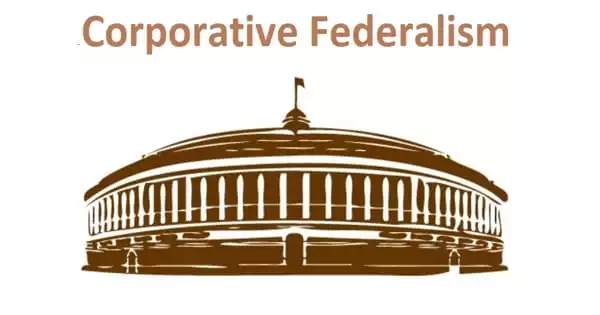One of the most significant issues for any country to face is how to distribute power among the country and its many parts (states, counties, provinces, parishes, etc.). It is a federalist system that is based on fiduciary jurisdiction to corporate personhood rather than the common federalist idea of relative land area or nearest spheres of influence for governance, in which groups that are considered incorporated members of their own prerogative structure by willed agreement can delegate their individual effective legislature within the overall government. Federalism, or the relationship between a centralized authority and its separate sections, can vary greatly.
Corporative federalism is an intergovernmental relations concept that acknowledges the overlapping roles of the national and state governments. It necessitates the sharing of authority and collaboration on overlapping functions by state and national governments. This paradigm differs from the dual federalism concept, which holds that the national and state governments have distinct and separate government tasks.
Throughout history, various people have devised various methods for sharing government functions. The Austro-Hungarian Empire practiced a form of corporative federalism, granting individual rights to its many ethnicities inside their own assembly rather than through reference to the empire’s area. One approach of splitting this power is cooperative federalism, in which the national government (usually the legislature) has practically limitless jurisdiction to compel the lesser sections of government (often the states) to administer and execute national policy.
Corporative federalism establishes a relationship in which the national government has significant influence over the policies and behaviors of state governments, frequently through the use of program financing. Part of the intellectual grounds of corporative federalism as a kind of jurisdiction are demographics as polities as well as constituents of a federative structure. For example, if the federal government wants to ensure that national roadways are well-maintained, it might offer grants in assistance, a type of federal grant that provides funding for states to follow a policy.
Theories adding philosophical support to its own conceptualizations from ideas such as diplomatic recognition and the sovereign state’s right to exist as if it extended beyond territorial nation-state in an international structure, to an intranational structure of voluntary association of those with similar social world views being codified legal frameworks to themselves, within their own sphere of interaction, under a federal government of a particular nation state an intranational structure of the voluntary association of those with similar social world views being codified legal frameworks to themselves, within their own sphere For example, bureaucratic entities at the national and state levels typically collaborate to carry out governmental projects. Because the government’s responsibilities are distributed across multiple levels of government, citizens and organized interests have numerous avenues through which to influence public policy.
















